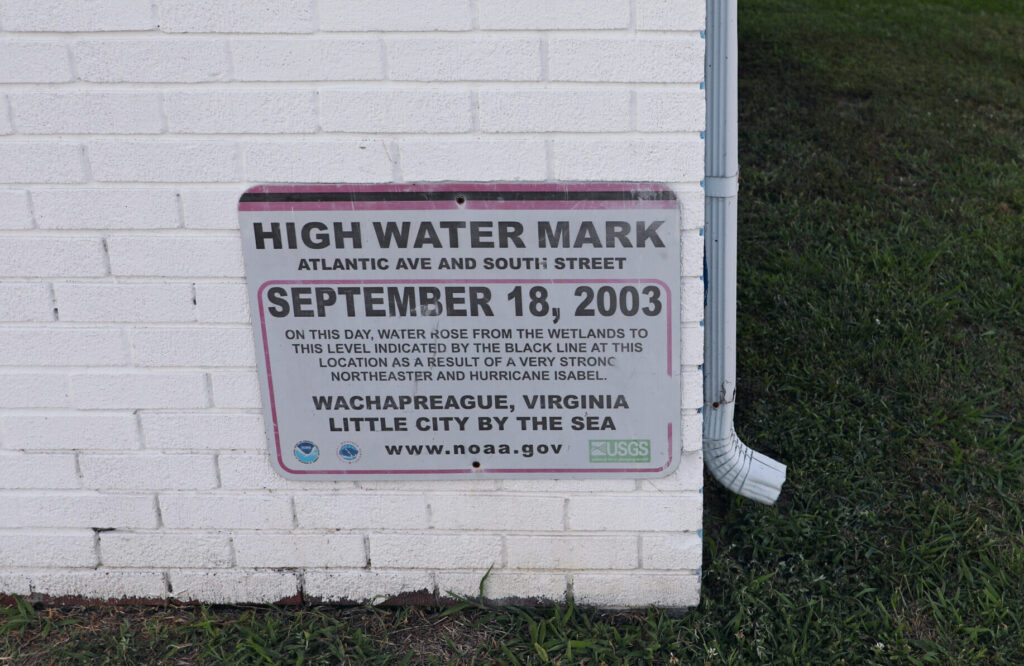Proactive Planning for Resilience: Protocols for Community-Led Climate Adaptation in Virginia
Strategy Development - Approach II
Reducing Risk with Mitigation and Adaptation Measures
Localities in Virginia have many options available to mitigate or adapt to flooding and heat risks. Below are descriptions of commonly used options, with some case studies highlighting best practices and important considerations.
Additionally, it is important to note that vulnerable coastal localities need to incorporate predicted sea level rise (SLR) data into their engineering and planning decision making. In Virginia, Gubernatorial Executive Order 45 (2019) established the NOAA Intermediate-High scenario curve for 2100 as the state standard for predicting sea level rise.1 The E.O. also set mandatory standards for development of state-owned properties in flood-prone areas, including freeboard (i.e.,the number of feet above flood level) standards.2 At the regional level, the Hampton Roads Planning District Commission adopted a Sea Level Rise Planning Policy and Approach (PDF) in 2018 that recommended that their member localities incorporate the following relative SLR scenarios into their engineering and planning decisions, selecting SLR curves based on risk tolerance and project costs:
- 1.5 feet above current mean higher high water (MHHW) for near-term (2018 to 2050)
- 3 feet above current mean higher high water (MHHW) for mid-term (2050 to 2080)
- 4.5 feet above current mean higher high water (MHHW) for long-term (2080 to 2100)3
Building on that guidance, and in light of developments such as the release of new SLR curves by NOAA, the development of future intensity-duration-frequency (IDF) curves by MARISA, and the City of Virginia Beach leading the way by adopting a Public Works Design Standards Manual that factors in future conditions such as SLR and increasing precipitation, the HRPDC adopted new recommendations in January 2025 that take into account future climate conditions. These recommendations include:
Sea Level Rise
Hampton Roads localities should incorporate the following SLR projections into their plans (comprehensive plans, hazard mitigation plans, etc.) and policies (public works standards, stormwater ordinances, zoning ordinances, etc.):
- 1.5 feet of SLR by 2050 (relative to the 1983-2001 National Tidal Datum Epoch)
- 3.0 feet of SLR by 2080
- 4.5 feet of SLR by 2100
For projects with longer lifespans, Hampton Roads localities should calculate project-appropriate SLR projections based on the 2022 Global and Regional Sea Level Rise Scenarios for the United States using a tool such as the U.S. Army Corps of Engineers’ Sea Level Analysis Tool (SLAT) or NOAA’s Sea Level Calculator.
– Tailwater Elevations
- Hampton Roads localities should incorporate watershed-specific tailwater elevations into their stormwater design standards. These elevations should account for SLR based on projected project lifespan, with a minimum of 1.5’ of SLR and 3’ of SLR for long lifespan projects.
– Precipitation
- Hampton Roads localities should adopt standards requiring the use of future precipitation levels that account for projected climate change. Hampton Roads localities should adopt a standard that increases NOAA Atlas 14 values by a minimum of 10%.
– Joint Tidal/Rainfall Design Storms
- Hampton Roads localities should adopt design storm requirements that account for both tidal elevations and rainfall and incorporate projected future conditions from SLR and increased rainfall.
In addition, at the federal level, the Federal Flood Risk Management Standard (FFRMS) (formerly implemented through presidential executive order) began being implemented through FEMA regulations effective September 9, 2024.4 The FFRMS requires federal agencies to select one of three approaches (or a fourth approach resulting from any other method in an update to the FFRMS) to establish flood elevation and the corresponding flood hazard area for project siting, design and construction.5 Localities should keep in mind that that standard will be used for federally-funded projects within their jurisdiction,6 and seek opportunities to coordinate planning accordingly.
Risk Reduction Options
1 Commonwealth of Va. Office of the Governor, “Va. Coastal Resilience Master Plan, Appendix O,” (2018): 6, https://www.dcr.virginia.gov/crmp/document/Appendix-O-Executive-Order-45-Floodplain-Management-Requirements-and-Planning-Standards-for-State-Agencies-Institutions-and-Property.pdf.
2 Ibid., 4-5.
3 Hampton Roads Planning District Commission, “Sea Level Rise Planning Policy and Approach,” October 18, 2018, https://www.hrpdcva.gov/DocumentCenter/View/6534/Proposed-Sea-Level-Rise-Planning-Policy-and-Approach-C-PDF?bidId=.
4 Federal Emergency Management Agency, “Updates to Floodplain Management and Protection of Wetlands Regulations To Implement the Federal Flood Risk Management Standard,” 89 FR 56929, 2024, https://www.federalregister.gov/documents/2024/07/11/2024-15169/updates-to-floodplain-management-and-protection-of-wetlands-regulations-to-implement-the-federal. See also Federal Emergency Management Agency, “Federal Flood Risk Management Standard,” https://www.fema.gov/floodplain-management/intergovernmental/federal-flood-risk-management-standard.
5 The three approaches are the Climate Informed Science Approach, the Freeboard Value Approach and the 500-year floodplain approach. See Federal Emergency Management Agency, 2024, 56931 (see 4).
6 “FEMA has authority to require application of the FFRMS as a condition of funding in its grant programs based on the grant programs’ authorizing statutes.” Ibid., p. 56930.

